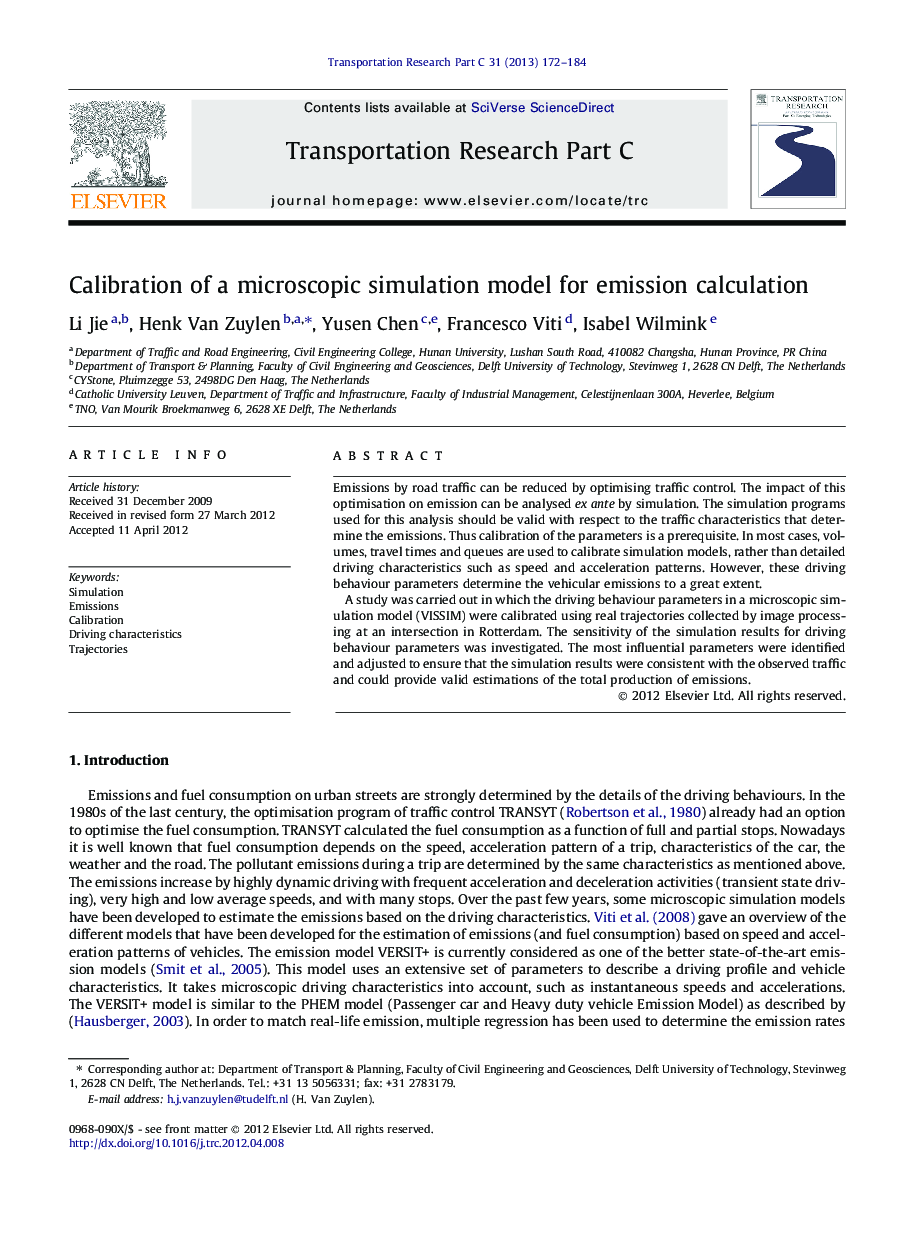| Article ID | Journal | Published Year | Pages | File Type |
|---|---|---|---|---|
| 525397 | Transportation Research Part C: Emerging Technologies | 2013 | 13 Pages |
Emissions by road traffic can be reduced by optimising traffic control. The impact of this optimisation on emission can be analysed ex ante by simulation. The simulation programs used for this analysis should be valid with respect to the traffic characteristics that determine the emissions. Thus calibration of the parameters is a prerequisite. In most cases, volumes, travel times and queues are used to calibrate simulation models, rather than detailed driving characteristics such as speed and acceleration patterns. However, these driving behaviour parameters determine the vehicular emissions to a great extent.A study was carried out in which the driving behaviour parameters in a microscopic simulation model (VISSIM) were calibrated using real trajectories collected by image processing at an intersection in Rotterdam. The sensitivity of the simulation results for driving behaviour parameters was investigated. The most influential parameters were identified and adjusted to ensure that the simulation results were consistent with the observed traffic and could provide valid estimations of the total production of emissions.
Graphical abstractFigure optionsDownload full-size imageDownload as PowerPoint slideHighlights• A microscopic calibration of VISSIM for emission calculation. • Use of vehicle trajectories from video registration. • Saturation flow, speed and acceleration distribution as calibration target.
